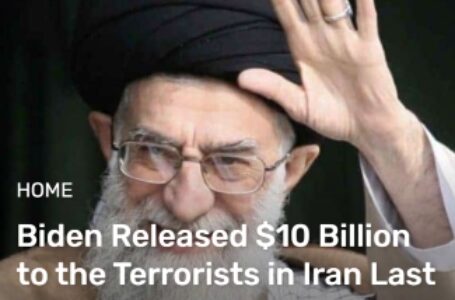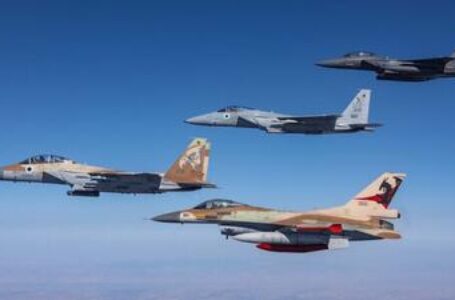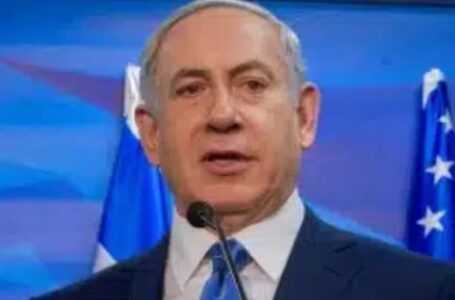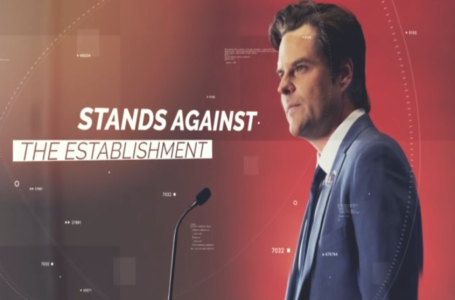Hizballah’s Advanced Missile Targets Israeli Drone as Israel Rethinks Purpose of Future War
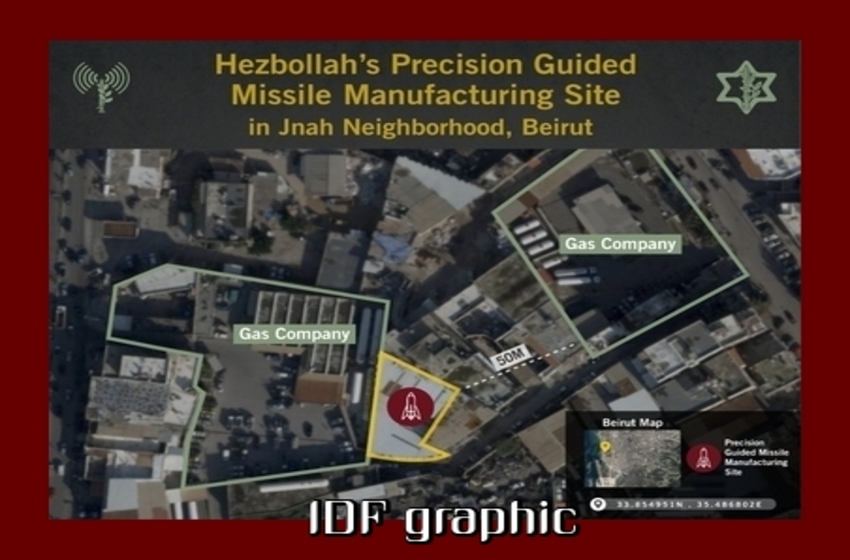
AMERICA IS ALSO A TARGET. WILL BIDEN MAKE A DEAL WITH IRAN AND DESTROY ISRAEL.
by Yaakov Lappin
Special to News
February 16, 2021
Hizballah’s decision to fire an advanced surface-to-air missile (SAM) at an Israeli intelligence-gathering drone over Lebanon Feb. 3 is an acute reminder of a daily, high-stakes cat-and-mouse game between a democratic state and a terror organization that has morphed into a terror army.
The Iranian-backed Hizballah attempts to hide its activities from Israeli eyes in the sky, while continuing to install missiles and rockets in built-up areas in Lebanon, pointing them at Israeli cities.
While the SAM missile failed to bring down the Israeli drone, its firing shows Hizballah’s ability to challenge Israeli air activity over Lebanon, whether that activity is for surveillance now, or for future air strikes.
Israel employs drones and manned aircraft to help map out Lebanese territory that Hizballah uses to build up a mass launch base, an effort underwritten by Iran.
Hizballah’s efforts constitute a fundamental violation of international law, specifically, the law of distinction. According to this key principle of the laws of war, combatants have to distinguish between enemy forces and civilians – a distinction that Hizballah deliberately ignores by planning to fire indiscriminately on Israeli civilians in a future conflict, and to deliberately target cities.
Hizballah’s intentions to send murder and kidnap squads through tunnels into northern Israeli civilian communities also represents a blatant intention to violate international law.
Hizballah’s embedment of its launchers in civilian areas in Lebanon is also a violation of international law, which prohibits the deliberate use of human shields to make it harder for adversaries to strike military targets.
It is too soon to determine whether the SAM incident signals a new Hizballah campaign to challenge Israeli intelligence-gathering activity, said Brig. Gen. (Ret.) Yossi Kuperwasser, the former head of the IDF Military Intelligence Directorate’s research division.
But further Hizballah attempts to bring down Israeli drones could lead to an escalation, said Kuperwasser, now the director of the Project on Regional Middle East Developments at the Jerusalem Center for Public Affairs.
But the firing could also have been a lone incident, he said. “Perhaps the drone approached a sensitive area for Hizballah, and it wanted to move it away. An area sensitive enough for there to be anti-aircraft missiles there.”
If so, he added, the missile launch is not an indication of a fundamental change in Hizballah’s use of its weapons. The IDF did not appear to respond, and did not publicly rush to determine that a new trend had begun in Lebanon.
Separate air strikes occurred in southern Syria that same night, attributed by media reports to Israel. But those were more likely triggered by weapons deliveries from Iran, Kuperwasser said.
Israel appears to be adopting a wait and see approach to determine if Hizballah has changed its agenda on challenging Israeli air activity over Lebanon, he said.
Israel’s air superiority is essential for gathering intelligence in Lebanon, and forms “an important component in the relative stability of the area,” Kuperwasser noted. “It’s important that someone always knows what is going on there. The IDF’s presence, via drones and other types of platforms in Lebanon’s skies, has been going on for years. [Hizballah leader Hassan] Nasrallah and his people never liked it, but they accepted this reality. If Hizballah is trying to change this component in the equation of relations between Israel and Lebanon, that could lead to an escalation.”
Hizballah has had an inventory of surface-to-air missiles for several years, a fact that Israel “does not like, though the level of threat to Israel’s freedom of maneuver is limited,” said Kuperwasser.
If Hizballah attempts to smuggle in more significant surface-to-air missiles, that could also be a source of military escalation.
Meanwhile, in a sign that the relative quiet could be challenged in the coming year, the IDF’s Military Intelligence Directorate released an annual assessment last week, which held that Hizballah is prepared to risk entering into a number of “days of battle” with Israel for the first time since the 2006 Second Lebanon War.
Unlike that war, in which Hizballah fired some 4,000 rockets at northern Israeli cities, Hizballah today is capable of firing 4,000 rockets per day, and its arsenal of projectiles is larger than 95 percent of the world’s militaries.
Skirmishes Possible
While Hizballah appears to be very busy with Lebanon’s multiple, ongoing crises, and is deterred by the prospect of an immediate war with Israel, it remains determined to take “revenge” for the killing of one of its junior members last July in an alleged Israeli air strike on an Iranian target in Damascus. It has since launched two attempts to kill IDF soldiers, both foiled by Israeli military alertness.
Kuperwasser said that a look at Hizballah’s actions in the past year reveal that it is not keen on entering into a new escalation with Israel, even a limited one.
“It is preparing for a calculated, tit-for-tat response, as part of its ‘equation,'” he said. “They say, ‘you killed our soldier, we will kill soldier.’ They remain committed to doing this, and they have the patience and space to maneuver,” Kuperwasser argued.
Despite Hizballah’s caution, the general stability of the area could face major challenges in the coming year, both because of localized incidents in Lebanon that could escalate, and because of the fact that Hizballah and Iran are under pressure.
Within Lebanon, the assassination of political activist Lokman Slim, a vocal Hizballah opponent, could increase such pressure.
Hizballah is widely suspected of being behind the shooting. If this is the case, it demonstrates that the organization feels “very threatened by all of the accusations in Lebanon against it,” said Kuperwasser. That includes domestic criticism accusing the organization of driving Lebanon’s increased international isolation, as well as accusations that Hizballah’s refusal to cooperate with the International Monetary Fund is standing in the way of desperately needed international financial assistance for a failed economy. Hizballah’s pattern of storing explosives in civilian areas also came under increased criticism following the devastating August Beirut blast.
“There is no doubt that when it is pressured, it can make mistakes and do things that are illogical inside Lebanon,” Kuperwasser added – while it remains to be seen whether this lashing out can also trigger an escalation with Israel.
Meanwhile, Hizballah’s Iranian patrons are waiting to see whether their dream of crippling U.S. sanctions being lifted will materialize, and they are getting mixed signals from Washington so far.
Iran could add to its nuclear extortion steps by attempting to pressure the U.S. with regional escalations too, Kuperwasser cautioned.
This could take the form of heating up the Lebanese, Syrian, or Gazan fronts with Israel. “There are ways for them to signal that there is a price for not responding to their offers, ” he said. “The IDF will need to maintain a high state of alert.”
‘Turn on the light, put out the fire’
Meanwhile, Israeli military strategists are rethinking what a future war with Hizballah could look like.
Writing in the Dado Center, the IDF’s official think tank, Brig. Gen. Eran Ortal, who heads the think tank, shed some valuable light on the IDF’s new thinking in a Hebrew-language paper.
Sketching out a new possible “activation concept” for the IDF, Ortal called for any future Israeli ground maneuver in enemy territory to lead “the exposure and destruction of its projectile-firing capabilities.” In his paper, Ortal identifies the challenges faced by a state military when it engages an asymmetric enemy like Hizballah, which relies on missiles and shielding itself in civilian built-up areas.
“The missile enables its user to remain hidden, at least for most of the time,” he wrote. Hizballah’s stealthiness is matched by its deadliness, since it can fire relatively precise and lethal weaponry, while at the same time remaining embedded in hidden locations, often in built-up areas.
“The answer lies in two simple principles,” said Ortal. The first is to “turn on the light” by employing a network of advanced sensors to expose Hizballah’s positions. The second is to “put out the fire” by linking those sensors to Israel’s firepower, and counter-attacking Hizballah’s missile launchers. IDF units in Lebanon could also take advantage of their closeness to Hizballah to help intercept the organization’s projectiles as they are taking off for Israel, thereby sparing the Israeli home front from additional damage and air raid sirens.
“The hidden enemy does not have to move around the battlefield in visible vehicles, but rather, is embedded in built-up areas and in nature, attacking the Israeli civilian home front with projectiles, and sniping at the IDF with anti-tank missiles and other firepower,” Ortal explained.
The answer to this problem, he argued, is to deploy large numbers of unmanned vehicles in the air and on the ground, and to fit them with sensors, which can deliver a clear picture to the IDF, enabling it to destroy Hizballah’s capabilities.
Creating “flocks” of unmanned platforms with sensors that can automatically detect enemy positions is possible, he said, since the enemy becomes exposed as soon as it fires its missiles, whether these are anti-tank missiles at IDF units, mortars, or surface-to-air missiles at the Israeli Air Force.
“The result would be the rapid destruction of terror army cells,” Ortal stated.
An additional contribution to rethinking Israel’s efforts in a future war against Hizballah came in a Dado Center paper by former Israeli National Security Adviser, Maj. Gen. (res.) Yaakov Amidror. In it, Amidror suggests that any future war should not only destroy Hizballah’s military capabilities, but also create a new situation in which Hizballah is unable to rearm after the war as it did after the Second Lebanon War.
To that end, Amidror envisaged two stages of the conflict. In the first, the relatively short and intensive stage, would last two to three weeks. Israeli ground forces would take a large part of southern Lebanese territory, while the air force would be active throughout Lebanon to destroy targets, including many of its rocket and missile launchers that target Israel, and its ground cells designed to take on the IDF in Lebanon. The second stage, “the longer clean up stage,” would last months, and see the IDF destroying the full scope of Hizballah’s infrastructure and weapons.
After eventually withdrawing, the IDF could activate its force to prevent Hizballah from rebuilding by launching targeted strikes as weapons smuggling and construction sites in Lebanon. Hizballah could do little in response, since it its firepower will have already been destroyed.
Amidror noted that such an operation would also indirectly weaken Iran, by removing its most powerful and influential Middle Eastern armed proxy, and the centerpiece of its terror army model, from the region. This would not only significantly dent Iran’s ability to project power in the region, but also undermine the proxy warfare system that Iran has championed, and used to spread terrorism, for decades.
Yaakov Lappin is a military and strategic affairs correspondent. He also conducts research and analysis for defense think tanks, and is the military correspondent for JNS. His book, The Virtual Caliphate, explores the online jihadist presence.
Copyright © 2020. Investigative Project on Terrorism. All rights reserved.
…… …. ….

########








